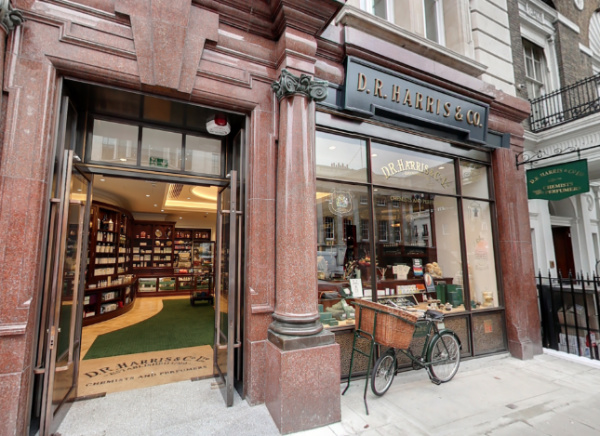
Hatters they are, but mad they most definitely are not (more on that connection later). Lock & Co Hatters, which describes itself not only as London’s oldest hat shop but the world’s oldest, has been serving the city’s hat needs since James Lock first opened the doors at number six, St James’s Street, in 1765.
Lock took over the premises after completing an apprenticeship as a hatter with Charles Davis, son of Robert Davis who had opened a hatters in St James’s Street in 1676. Lock had married Charles’ sister Mary in 1759 and, along with his new bride, had inherited his father-in-law’s business. In 1765, they and their growing family moved across the road from that premises to No 6, previously a coffee house.
 The shop soon established itself with the city’s elite and its client list grew to include the likes of Lord Grenville, Prime Minister between 1806-07, and, most famously, Admiral Lord Nelson, who first visited the shop in 1800 to order his signature bicorne – a “cocked hat and cockade” – with a specially built-in eye shade (Nelson had lost his eye at the Battle of Calvi). Nelson’s final visit, incidentally, would take place in September, 1805, when he settled his bill before setting sailing to Spain where, wearing one of Lock’s hats, he would lose his life – and become part of a legend – in the Battle of Trafalgar.
The shop soon established itself with the city’s elite and its client list grew to include the likes of Lord Grenville, Prime Minister between 1806-07, and, most famously, Admiral Lord Nelson, who first visited the shop in 1800 to order his signature bicorne – a “cocked hat and cockade” – with a specially built-in eye shade (Nelson had lost his eye at the Battle of Calvi). Nelson’s final visit, incidentally, would take place in September, 1805, when he settled his bill before setting sailing to Spain where, wearing one of Lock’s hats, he would lose his life – and become part of a legend – in the Battle of Trafalgar.
But back to the Locks. James Lock died in 1806 and it was his illegitimate son, George James Lock (aka James Lock II), who inherited the business which continued to flourish (clients around this time include the Georgian dandy Beau Brummell). George’s son, James Lock III and his younger brother George took over in 1821, and in 1849, they were commissioned by Edward Coke to create a hard-domed hat for his gamekeepers – the result was the iconic Coke hat (known to some as the Bowler hat, a name which came from Southwark-based Thomas and William Bowler whom Lock had commissioned to make the hat) .
The Lock & Co hat business continued to pass down through the family and the list of the famous who purchased hats in the store continued to grow – Oscar Wilde bought a black fedora there to wear on his US lecture tour (and due to his later incarceration was unable to pay his bill which was settled more than 100 years later by one of his fans after this news was included in an article in The Times) while Sir Winston Churchill wore a Lock silk top hat on his wedding day and also purchased his trademark Cambridge and Homburg hats there.
In 1932, film star Douglas Fairbanks, Jr, moved in above the shop (and naturally bought some monogrammed hats which were sold in 2011 as part of his estate) while Charlie Chaplin purchased hats there in the 1950s and, impressively, in 1953, Lock worked with jewellers Garrard and Co to design the “fitments” for Queen Elizabeth II’s coronation crown.
A warrant from the Duke of Edinburgh, Prince Philip, followed (in 1993, Lock & Co received its second Royal Warrant, this time from the Prince of Wales.
Others among Lock’s more high profile clientele over the years have included Jacqueline Kennedy, wife of US President John F Kennedy, and Lock’s Coke hat even made a famed appearance on the silver screen as the headwear of the Bond villain Oddjob in Goldfinger.
The firm, meanwhile, has continued to grow, acquiring Piccadilly hatters Scott & Co in the 1970s.
Lock’s association with Lord Nelson was remembered in 2012 when it designed a hat for his statue atop Nelson’s Column in Trafalgar Square which featured a full-sized Olympic torch and which, due to popular demand, was left on the admiral for the duration of the Olympics.
Interestingly, it is also claimed that James Benning, a member of the Lock family and a servant of Charles Lutwidge Dodgson (aka Lewis Carroll) – writer of Alice in Wonderland, was the inspiration behind the ‘Mad Hatter’.
PICTURES: Top – Jeremy T. Hetzel; Right – Matt Brown – both licensed under CC BY 2.0.
























